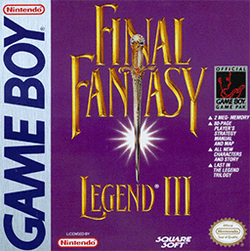
Sága and Sökkvabekkr
In Norse mythology, Sága (Old Norse: [saːɣa], possibly meaning "seeress") is a goddess associated with the wisdom Sökkvabekkr (Old Norse: [sɔkːwabekːr]; "sunken bank", "sunken bench", or "treasure bank"). At Sökkvabekkr, Sága and the god Odin merrily drink as cool waves flow. Both Sága and Sökkvabekkr are attested in the Poetic Edda, compiled in the 13th century from earlier traditional sources, and in the Prose Edda, written in the 13th century by Snorri Sturluson. Scholars have proposed theories about the implications of the goddess and her associated location, including that the location may be connected to the goddess Frigg's fen residence Fensalir and that Sága may be another name for Frigg.
Etymology
The etymology of the name Sága is generally held to be connected to the Old Norse verb sjá, meaning "to see" (from Proto-Germanic *sehwan). This may mean that Sága is to be understood as a seeress. Since Frigg is referred to as a seeress in the poem Lokasenna, this etymology has led to theories connecting Sága to Frigg. Rudolf Simek says that this etymology raises vowel problems and that a link to saga and segja (meaning "say, tell") is more likely, yet that this identification is also problematic.

Saga (genus)
Saga is a genus of bush crickets (family Tettigoniidae) containing around 15 species.
Species
References

Final Fantasy Legend III
Final Fantasy Legend III, originally released in Japan as Jikū no Hasha ~ Sa·Ga 3 [Kanketsu Hen] (時空の覇者 Sa・Ga3 [完結編], The Ruler of Time and Space ~ SaGa3 [Final Chapter]), is a role-playing video game developed and published by Square Co. for the Game Boy handheld system as the third game of their SaGa series. Initially released for Japanese audiences in December 1991, the game was made available in North America nearly two years later in August 1993. While the title retains many similarities to its predecessors in terms of style and gameplay, the game's development was headed by series newcomer Chihiro Fujioka, who also served as composer alongside Ryuji Sasai. The North American version of the game saw a re-release alongside the two other Final Fantasy Legend titles in July 1998 courtesy of Sunsoft. In 2010, an enhanced remake of the game was announced for the Nintendo DS titled SaGa 3 Jikū no Hasha: Shadow or Light (サガ3時空の覇者 Shadow or Light, SaGa3 The Ruler of Time and Space ~ Shadow or Light), featuring three-dimensional graphics, new story elements, and an arranged soundtrack.

Maze
A maze is a path or collection of paths, typically from an entrance to a goal. The word is used to refer both to branching tour puzzles through which the solver must find a route, and to simpler non-branching ("unicursal") patterns that lead unambiguously through a convoluted layout to a goal. (The term "labyrinth" is generally synonymous, but also can connote specifically a unicursal pattern.) The pathways and walls in a maze are typically fixed, but puzzles in which the walls and paths can change during the game are also categorised as mazes or tour puzzles.
Maze construction
Mazes have been built with walls and rooms, with hedges, turf, corn stalks, hay bales, books, paving stones of contrasting colors or designs, and brick, or in fields of crops such as corn or, indeed, maize. Maize mazes can be very large; they are usually only kept for one growing season, so they can be different every year, and are promoted as seasonal tourist attractions. Indoors, Mirror Mazes are another form of maze, in which many of the apparent pathways are imaginary routes seen through multiple reflections in mirrors. Another type of maze consists of a set of rooms linked by doors (so a passageway is just another room in this definition). Players enter at one spot, and exit at another, or the idea may be to reach a certain spot in the maze. Mazes can also be printed or drawn on paper to be followed by a pencil or fingertip.

MAZE: Solve the World's Most Challenging Puzzle
MAZE: Solve the World's Most Challenging Puzzle (1985, Henry Holt and Company) is a puzzle book written and illustrated by Christopher Manson. The book was originally published as part of a contest to win $10,000.
Unlike other puzzle books, each page is involved in solving the book's riddle. Specifically, each page represents a room or space in a hypothetical house, and each room leads to other "rooms" in this "house." Part of the puzzle involves reaching the center of the house, Room #45 (which is page 45 in the book), and back to Room #1 in only sixteen steps. Some rooms lead to circuitous loops; others lead nowhere. This gives the puzzle the feel of a maze or labyrinth.
The book was adapted as the computer game Riddle of the Maze in 1994 by Interplay. This version featured full color illustrations and voice-overs for the narrator.
The contest has been void since 1987, but the book may still be purchased (ISBN 0-8050-1088-2).
Parts of the Puzzle

Mazé
Mazé is a former commune in the Maine-et-Loire department in western France. On 1 January 2016, it was merged into the new commune of Mazé-Milon.
See also
References

Team (band)
Team is a contemporary Slovak rock music band. They are most famous for a single from their third album which was called "Držím ti miesto", which was included in the soundtrack of the 2005 American film Hostel.
Discography
See also
External links
Podcasts:

